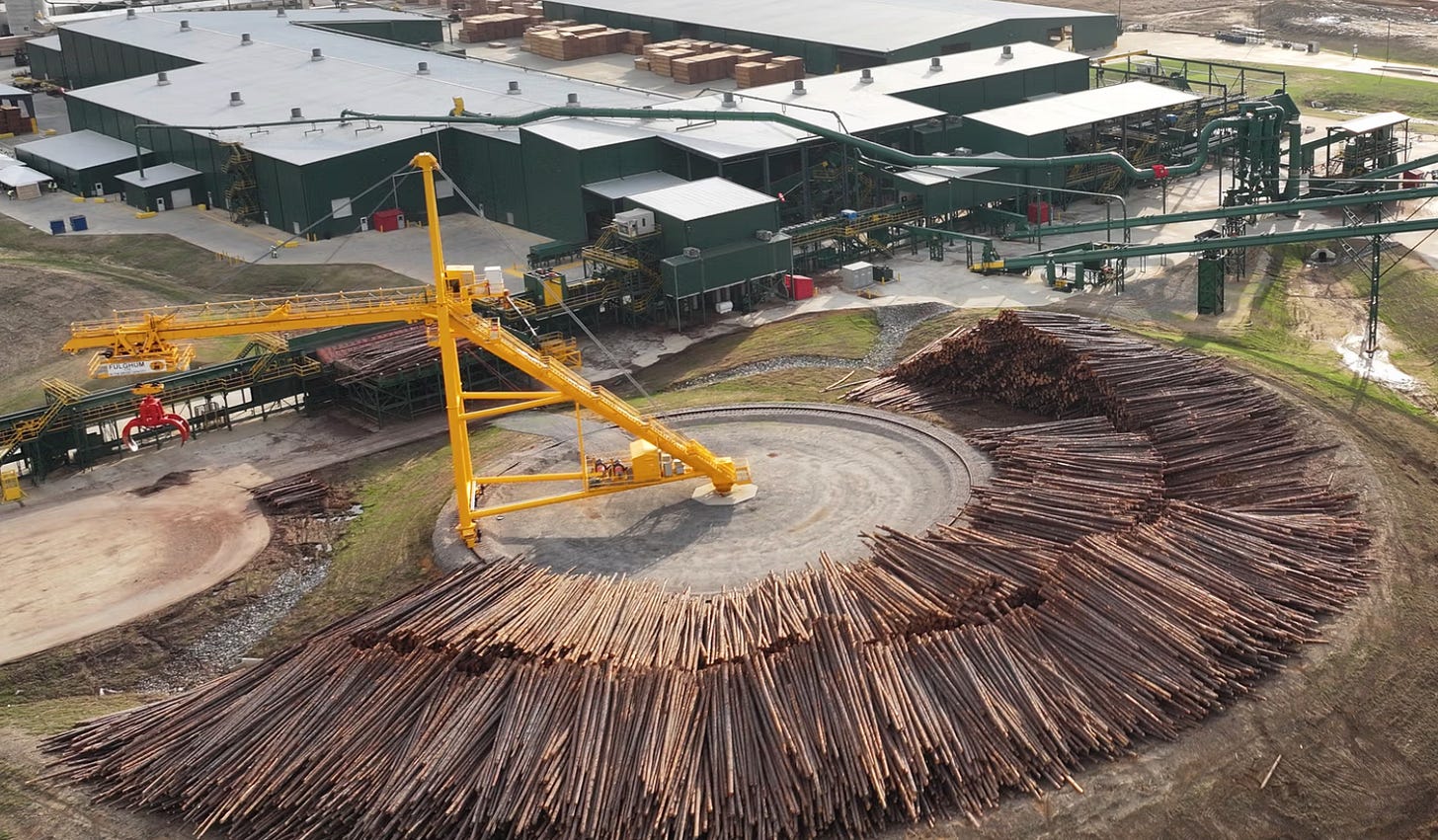Most Canadian Lumber Now Comes From U.S. Mills - Hurting Vermont's Forest Industry
The very Canadian companies whose names are synonymous with the lumber that frames our houses are increasingly producing that wood not in the forests of Quebec or B.C., but deep in the American South.
For any Vermonter who has undertaken a construction project in recent years, the high and volatile price of lumber is a familiar frustration. The two-by-fours and plywood panels essential for building homes are often a significant driver of escalating costs, a situation commonly blamed on the long-standing trade dispute and steep tariffs on softwood lumber imported from Canada.
However, a major shift in the North American lumber industry reveals a complex new reality. The very Canadian companies whose names are synonymous with the lumber that frames our houses are increasingly producing that wood not in the forests of Quebec or British Columbia, but deep in the American South. This strategic migration, while a savvy business move for the companies, is creating a double bind that offers little relief for Vermont’s builders and adds competitive pressure to our state's own struggling sawmills.
The Great Southern Migration
Leading Canadian forestry giants, including West Fraser, Canfor, and Interfor, have been on a multi-billion-dollar buying spree across the U.S. South. An analysis from industry observers shows a dramatic change: as far back as 2018, these top three Canadian firms already owned more sawmills in the U.S. than in Canada, a trend that has only accelerated.
The reasons for this shift are twofold. First, the companies are facing a "push" from their home turf in British Columbia, which has been hit by what industry reports call a "perfect storm" of challenges: catastrophic infestations of mountain pine beetles, devastating wildfires, and stricter regulations on logging. This has constrained the available timber supply and driven up operating costs.
At the same time, the U.S. South is "pulling" them in with what foresters describe as a "wall of wood"—vast, privately-owned, and fast-growing forests of Southern Yellow Pine. This, combined with lower operating costs and a favorable business climate, makes states like Alabama, Georgia, and Arkansas prime territory for expansion.
A Tariff-Proof Strategy
Crucially, this southward expansion serves as an elegant solution to the decades-old softwood lumber dispute between the U.S. and Canada. Lumber produced in a U.S. mill, even if owned by a Canadian company, is an American product. Therefore, it is not subject to the import duties—currently around 8%—that are levied on lumber that crosses the border from Canada.
According to a recent analysis from Morningstar, major firms like Canfor have strategically expanded their U.S. operations to hedge against these duties. The financial analysis notes that as these companies shift production away from Canada, a smaller and smaller percentage of their total sales are exposed to tariffs.
While this benefits the companies' bottom lines, it does little to lower the benchmark price for lumber in the U.S. market. The tariff on Canadian imports still effectively sets a higher price floor for all softwood lumber sold in the country, including the wood now being churned out of Canadian-owned mills in the South.
The Vermont Squeeze
For Vermont, this continental shift offers no easy relief. "The volatility in material pricing is forcing us to rethink how we do business," said Claudia Homan, President of the Vermont Retail Lumber Dealers Association, in a statement to the Northeastern Retail Lumber Association (NRLA). She noted that price volatility, driven by these larger market forces, makes it harder for homeowners to afford even basic repairs.
Vermont’s construction industry has long-established supply chains that rely heavily on Eastern Canadian spruce-pine-fir (SPF) from provinces like Quebec. This lumber is still subject to the full tariff, keeping prices high for local builders. While Southern Yellow Pine (SYP) from the new southern mills is an alternative, it has different properties, and the cost of transporting it to the Northeast can offset any price advantages.
The result is continued pain for the local housing market. A 2021 report by the Vermont Housing Finance Agency (VHFA) found that the rising cost of materials was already causing significant project delays and driving up the per-unit cost of affordable housing—a situation that has not abated.
Impact on State Sawmills
Meanwhile, Vermont's own forestry industry is feeling the pressure from both sides. Our state's sawmills, which number nearly 150 fewer than in the year 2000 according to a recent report in Seven Days, struggle to compete on price with both tariff-laden Canadian imports and the massive, highly efficient southern mills. At a recent legislative meeting, Vermont industry stakeholders voiced deep concerns about the precarious nature of the lumber supply chain and the viability of their own operations.
Faced with these challenges, some in Vermont's forestry sector are adapting by focusing on high-value, niche products. The Vermont Sustainable Jobs Fund is actively promoting the development of markets for mass timber, wood-fiber insulation, and other specialized products that don't compete directly with commodity framing lumber.
Ultimately, the label on a stack of lumber at a Vermont construction site may still read "Canfor" or "West Fraser," but its origin story is changing profoundly. And for Vermont, that new story has so far resulted in a frustrating paradox: we continue to pay a premium for an essential building material, while our own historic forest economy faces an ever-more-uncertain future.


